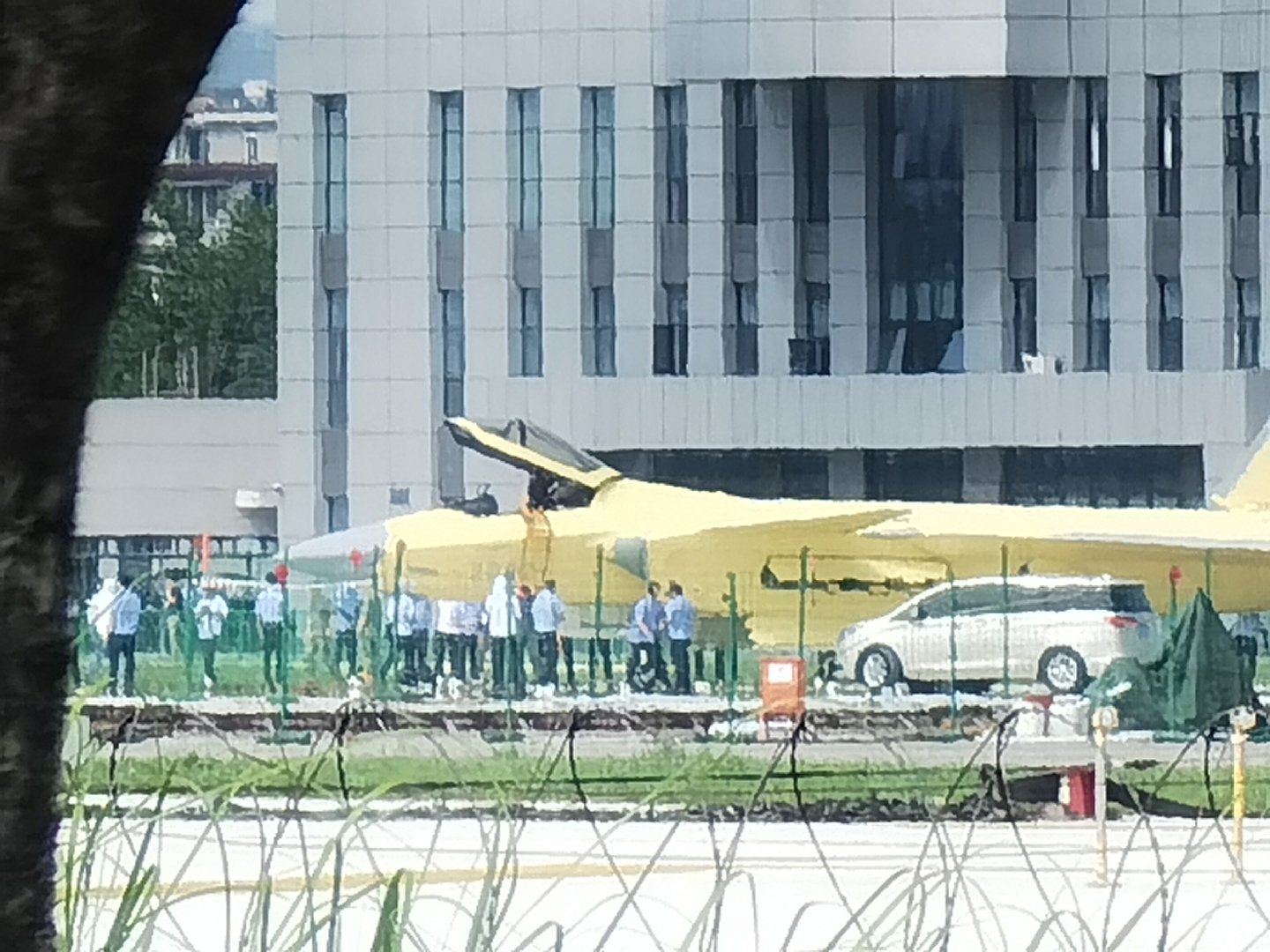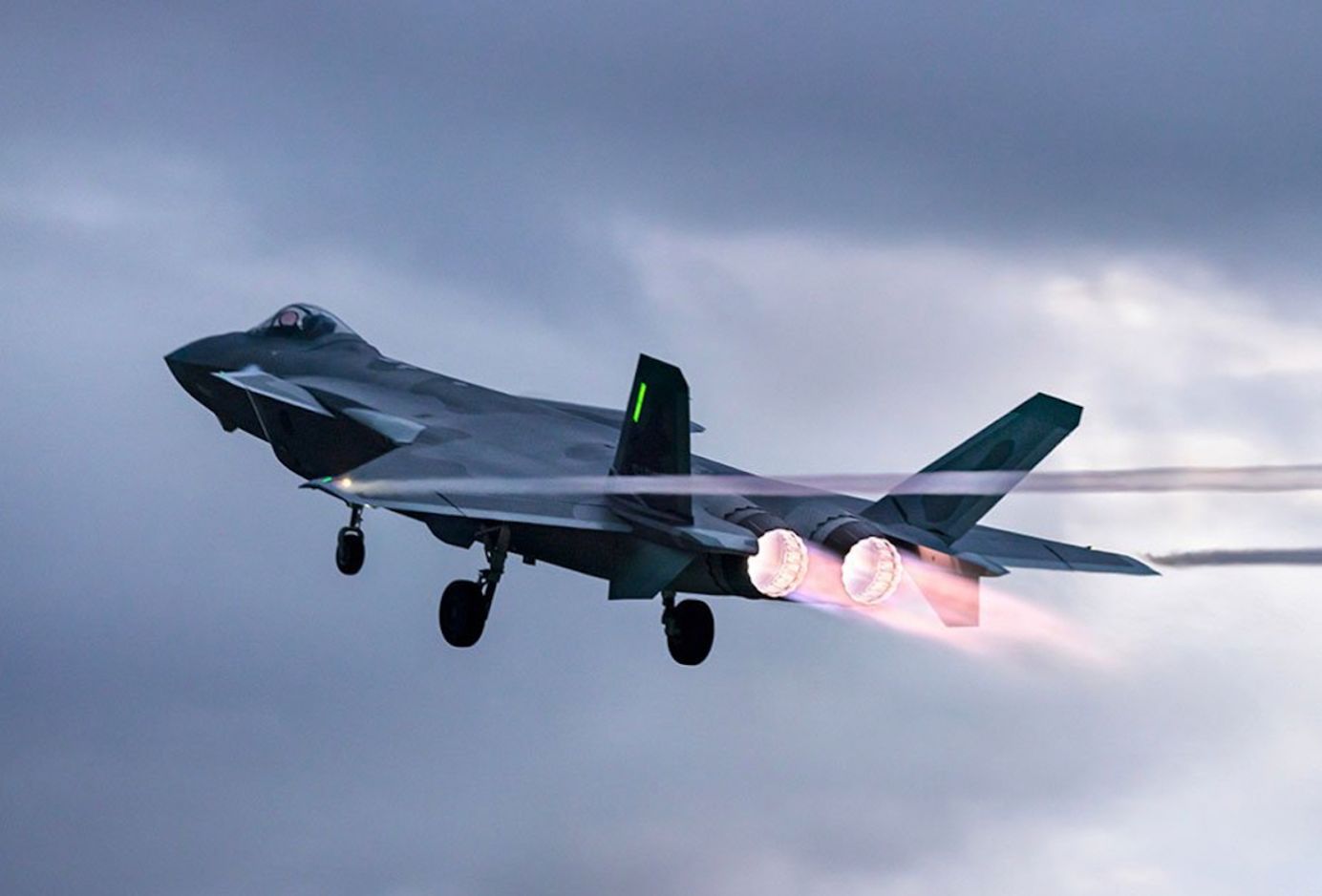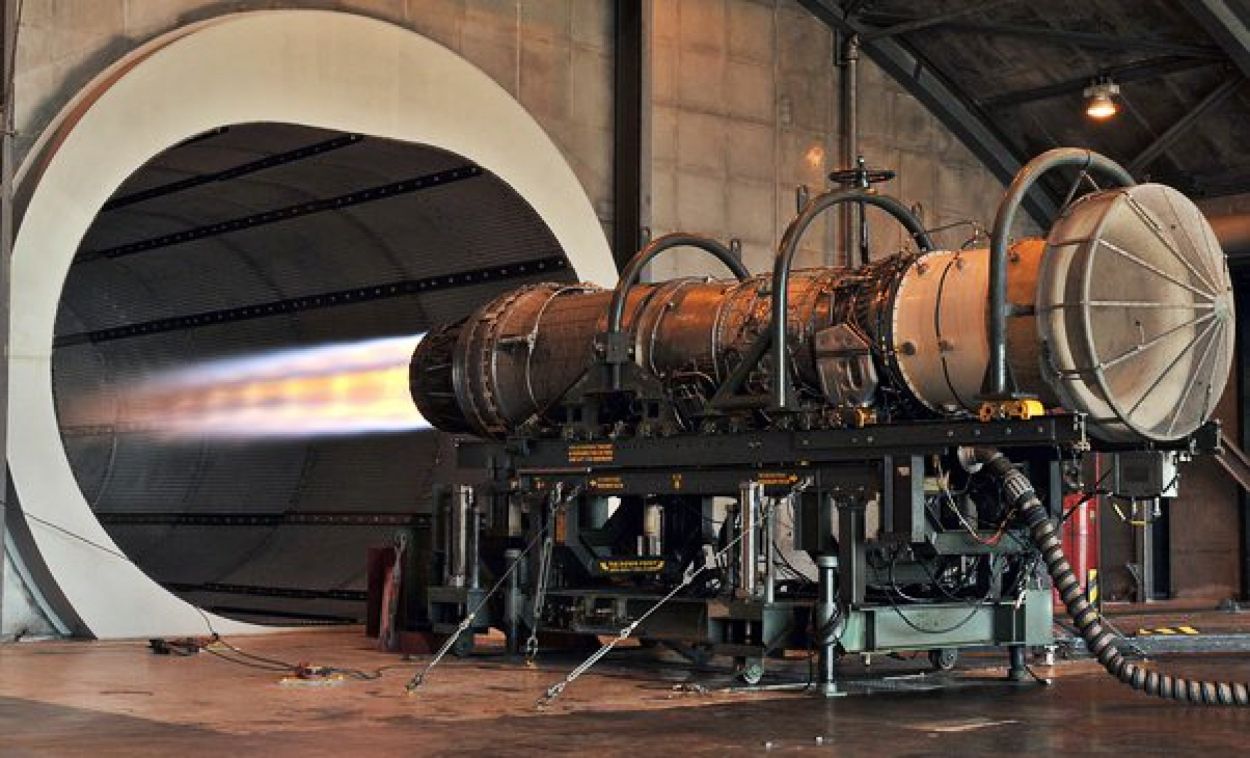While India looks at the US to power its domestic fighter jets, China has made remarkable strides by reportedly equipping its top-of-the-line J-20 stealth fighter with new indigenously developed WS-15 jet engines.
MQ-9 Drones With Indian Navy Have Proved Their Worth In Gold, Comparing With Tapas Not Right – Navy Veterans
Images and videos recently surfaced on social media indicate that China’s J-20 stealth fighter, fitted with two newly developed WS-15 jet engines, has successfully completed its inaugural flight.
According to reports, the first flight of the Chinese J-20 stealth fighter equipped with WS-15 engines took place on June 28. The flight was conducted from Chengdu’s primary test airfield, situated alongside its production facility in the city of Chengdu.
Following the completion of the flight, pictures of the jet, powered by WS-15 engines, show the aircraft receiving special attention. In one image, a banner displaying the number 15 is visible, further suggesting the presence of the WS-15 engines on the aircraft.
The homegrown WS-15 engine has apparently been carefully tailored to meet the requirements of the People’s Liberation Army (PLA) Air Force’s J-20, which is currently equipped with the homegrown WS-10 engine.
新型の国産エンジンであるWS-15を2基搭載したJ-20B戦闘機が初飛行に成功。 pic.twitter.com/ChjzZnCuWR
— お砂糖wsnbn (@sugar_wsnbn) June 29, 2023
The initial J-20 prototypes and early production models were propelled by AL-31 turbofan engines, which were supplied in Russia. However, to reduce its dependence on Moscow, Beijing has been actively striving to develop and master the technology required to produce its own engines.
The WS-15 engine, with its impressive thrust rating of 181 kilonewtons, is expected to deliver a significant performance boost to the J-20 fighter jet.
One of the key advantages it brings is the supercruise capability, enabling the aircraft to achieve supersonic cruise speeds without the need for afterburners. This cutting-edge feature not only enhances the J-20’s speed and maneuverability but also helps to reduce fuel consumption, ensuring extended mission endurance.
The development and progress of the WS-15 engine have been closely guarded and shrouded in secrecy, leaving the public with limited information on its exact capabilities. As of now, there have been no publicly available images showcasing a prototype or full-scale mockup of the engine.

According to Dr. Malcolm Davis, Senior Analyst at the Australian Strategic Policy Institute, the development of the WS-15 engine indicates a broader potential for advancements in other Chinese air combat capability projects, including future endeavors.
This progress is deemed highly significant, as it reinforces the need for urgency in progressing with sixth-generation air combat capability and crewed-autonomous teaming for the US Air Force and US Navy, as well as for US allies, including Australia.
Dr. Davis highlighted the importance of not solely relying on the F-35 for the Australian Air Force through to the 2040s and noted the necessity of staying proactive in developing cutting-edge air combat capabilities to meet future challenges effectively.

India Relies On Foreign Engines
If confirmed, the recent test of the J-20 aircraft equipped with the WS-15 engines is an impressive achievement for China’s aerospace industry, considering the complexity of engine development, the need for advanced engineering knowledge, and substantial investments.
The success stands out even more when considering that many countries, like India and South Korea, are still struggling to develop their own engines and relying on foreign vendors for their domestically developed fighters.
Recently, New Delhi signed a Memorandum of Understanding (MoU) with General Electric (GE) to enable the manufacturing of GE F414 jet engines in India, specifically for the Light Combat Aircraft (LCA) Mk2.
The deal is nearing completion, with only some commercial terms remaining to be finalized and awaiting US Congressional approval.
It has been confirmed that around 80% of production technology will be transferred to India, facilitating the transfer of critical technologies to the country.

Once the contract is signed, it is estimated that it will take three years for the first engine to be produced.
In a recent article, experts, who spoke to EurAsian Times, expressed their views on the deal, stating that while it would address the gap in aircraft production and enhance defense capabilities, it might lead to a limitation in future aircraft designs, as they would need to be tailored to accommodate these imported engines.
This could potentially impede the progress of India’s domestic engine development program, representing a setback in achieving self-reliance in this crucial area.
Thus, the comparison between the two Asian powerhouses highlights a stark contrast, as China has made notable progress in building its domestic engines while India continues to face challenges and relies on imported engines.
- Contact the author at ashishmichel(at)gmail.com
- Follow EurAsian Times on Google News




